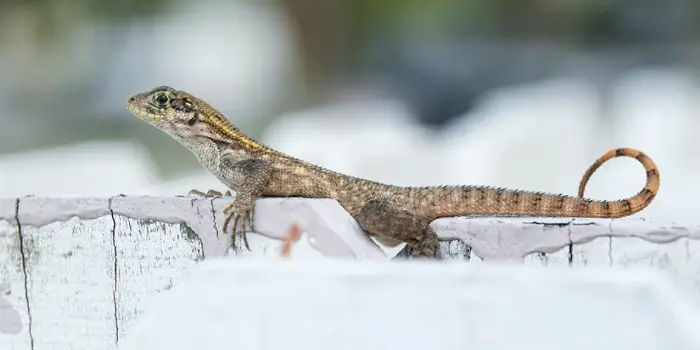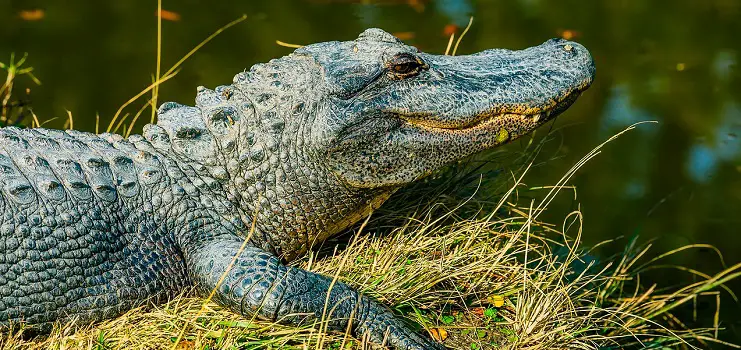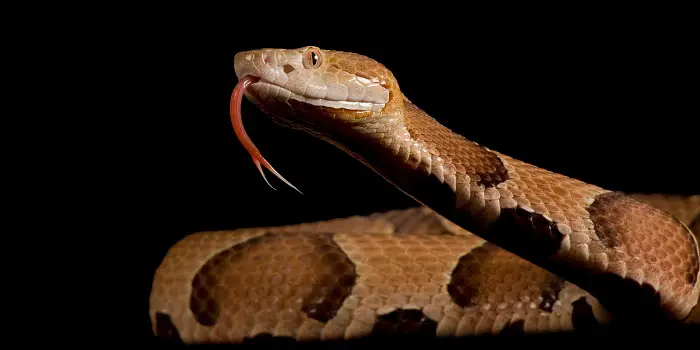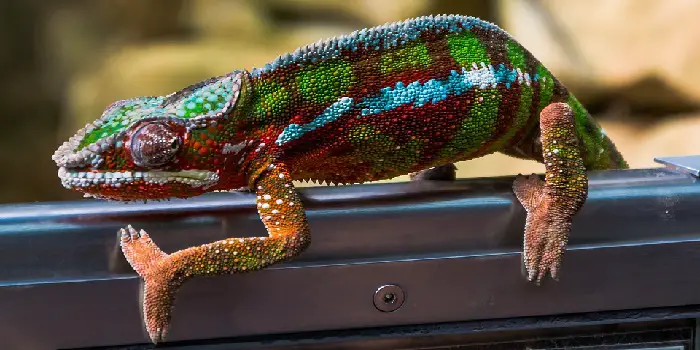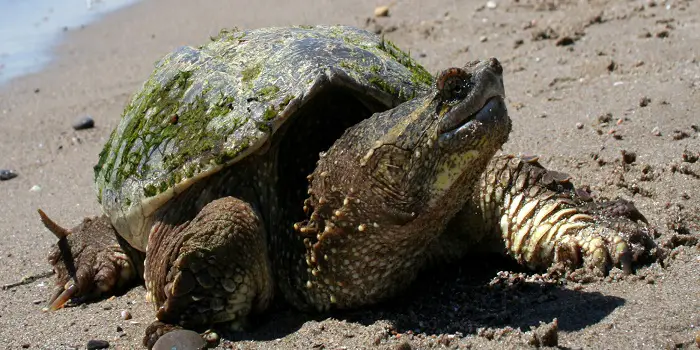
The common snapping turtle (Chelydra serpentina) is one among the large freshwater turtle that belongs to the family “Chelydridae.”
Mostly found in regions like southeastern Canada, Nova Scotia, and Florida, the common snapping turtle is the most widespread of all the three species of Chelydra.
Although it’s hard to differentiate between the common snappers and alligator snappers for novices, you can identify the snapping turtle by looking at their several different unique features, such as the size & shape of their head.
Snapping turtles are also easily identified by their unique dark carapace (upper shell) and small plastron (bottom shell).
Unlike in other turtles, you will find that these upper and bottom shell does not cover the flesh of snapping turtle completely.
This simply means that if you look closely at their head and shell, you can easily differentiate them from all other turtles.
Is Snapping Turtle Dangerous?
Although snapping turtles are not very aggressive or dangerous, they may attack humans if provoked by them.
Snapping turtles generally live in fresh or brackish water.
This is the reason they may even find the pond in your backyard most appealing to habitat.
Snapping turtles may get threatened on land, especially when interacting with humans or pets such as dogs, cats, etc.
In such circumstances, they may even attack or bite them if they are afraid and find themselves in any kind of trouble.
In worst cases, they may use their pointed beaks and the pressure of the jaw to cut half their prey.
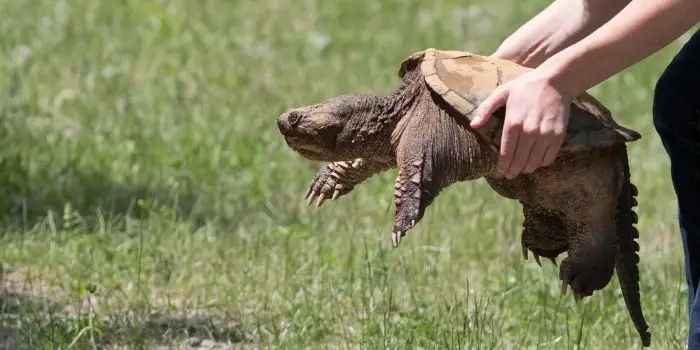
How to Get Rid of Snapping Turtles?
Often those living by the water sources may experience uninvited guests.
Well, do not be shocked to see some turtle eggs in your garden. Usually, turtles are constantly moving because of their shrinking natural habitat.
Commonly, the gardens with loose sandy soil prove to be a favorable location for these displaced turtles.
Turtles don’t harm anyone, but you should still control them to prevent your kids and pets from getting hurt.
So, if you want to know in detail how to control turtles in your garden, then below here are some tips and preventive measures to deal with nesting turtles.
In your pond
The real threat to turtles is the species of snapping turtles.
They feature pointed beaks and jaw pressure, which can easily tear their feed into two.
They can twist and turn their neck 360 degrees and can extend it to bite their prey at a distance of 2 feet.
While on one hand, you can even let snapping turtles remain in your backyard pond; if you are not comfortable with their presence, then you should get them removed.
Just make a call to animal control, and they’ll send turtle traps. On the contrary, you can try the traps on your own to remove them from the pond.
All you need to do is approach silently from the back and put your hands on either side of the shell.
Never pick a turtle by its tail. You may need two adults to lift a large snapping turtle.
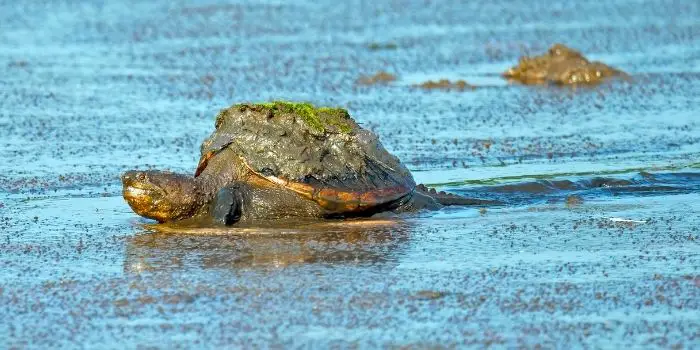
In your garden
It is up to you to consider turtles in your garden as a visual treat or nuisance according to their variety and nesting choices.
Keep in mind that when the turtle house is in a garden bed, the area should be left undisturbed, so you cannot do any landscape planning there.
Also, snapping turtles can cause steel trap bites which are hazardous for kids and pets in the house.
But, in most cases, turtles are gentle animals and turtle watching could be fun for a short time period if they have nested in your garden.
So, the next time you notice a turtle on your property, I would suggest just letting it be!!!
A female possibly would be looking for a nesting site there, and remember, turtles are very picky about their nesting location.
Once she has found her perfect location, she will dig a mound, lay her eggs, and leave until the next season.
Make sure you keep the nesting guarded against animals.
Don’t dig it open on your own, as turtle egg embryos are gentle and may get killed if disturbed.
However, if you don’t want these eggs in your garden for over a year, you can use a turtle trap and shift the animal.
Remember, it is not important to control turtles unless you seriously have something against them.
Is It Important to Control Turtles?
Well, turtles are harmless creatures, and they pose no threat to humans.
So, you can allow a feminine turtle to make her nest in your garden.
It could be a fun activity for your kids to watch a turtle’s egg hatching.
Once the eggs hatch, the young ones will leave your area and reach out for the nearest water body and never come back.
So, overall, it is an exciting opportunity to see something so fascinating in your life.
What you can do is use chicken wire to make a dome and cover the nest to secure it from dogs, raccoons, and nest breakers.
Rest for 3 months, and you will witness tiny turtles marching out of your yard to their natural habitat.
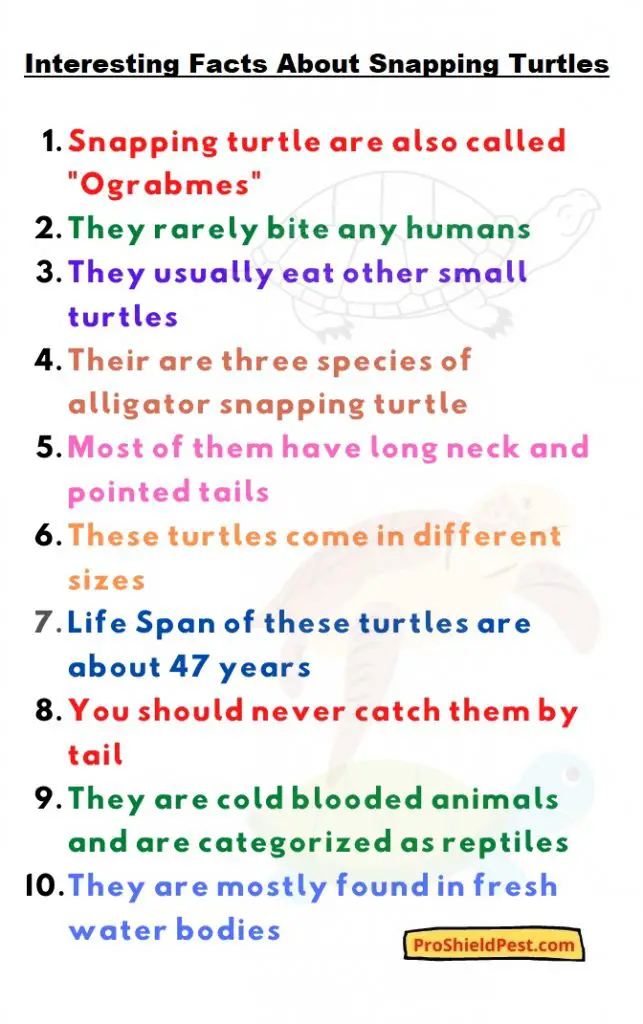
What to Do if a Snapping Turtle Bites You?
As mentioned before, a snapping turtle in your yard or a pond usually does not bite unless it’s injured or has been provoked by someone.
There are, however, cases seen when they bite fingers off or scratch the person when they are touched aggressively.
Handling them carefully, trapping them, and getting them off your property is a key to success when you want to get rid of these creatures.
However, in case you are bitten by a turtle (for whatever reason), your very first step should be to remain CALM and don’t frighten them.
1- Remove the Turtle
You can easily remove them by submerging the turtle in the water and waiting to let them go off themselves.
Believe me; turtles will not kill you.
Most of the time, you will need to do nothing except being calm and silent to get them off.
As soon as you feel that the grip of turtle claws is loosened, move away from him quickly.
Give them some time to get calm and let go away in the water.
2- Treat the Wound
Snapping turtles may carry germs called salmonella, and hence you may need to get proper medical treatment when bitten by them.
A medical professional may help you with the cleaning of the wound along with any antibiotics that may be needed for getting a cure for broken skin.
If you do not find your skin broken, you can generally wash the bitten area at home using warm soapy water and an antiseptic solution.
3- Tips and Precautions
Do not try to pull the turtle’s mouth off of you as this can frighten the turtle and can cause you more damage than any good.
If you want to remove the turtle from your pond, gently grasp them with a shell back and carefully take them away from your property without dropping them.
Make sure you hold them away from your body so that it does not attack.
Also, remember, you should never kill the snapping turtle that has bitten you. When killed, the turtle cannot release its grip.
Plus, the turtle’s jaw clamps down on your skin with even greater pressure which can cause you more injury and pain.
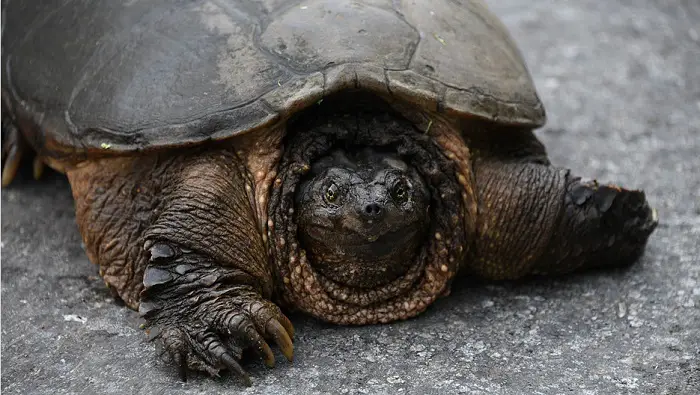
What to Do if You Find an Injured Snapping Turtle?
An injured snapping turtle in your yard, driveway, or on the road can be aggressive and can bite you if evoked.
So, do not touch or place your hands near the front half body of the animal.
- Find a good box or a container that can fit the turtle
- Then gently push the animal into the box from behind using a broom or a shovel
- once the turtle is inside the box, you can transport it to a wildlife rehabilitator or a clinic near you
Other Related Questions:
Are snapping turtles endangered?
The common snapping turtles are not endangered.
They are mostly the least concerned in many parts of the United States.
This also means you can hunt them during the hunting season if you find them on your property.
With that said, alligator snapping turtles have been overexploited for a long (due to their eggs and meat) and are now a protected species in many states.
So, if you really want to kill them, you should check with the concerned wildlife society near your area to check the present laws.
How big do common snappers get, and how fast?
Snapping turtles can grow to an impressively large size pretty fast due to their huge appetite.
Although 40-50 pounds is normal, some of them are reported to be as heavy as 80 pounds.
North American alligator snapping turtles can be much bigger – the record weight at present is more than 250 pounds.
What should you do if a snapping turtle lays her eggs?
If there are snapping turtles on your property, a female can dig nests between 5 to 7 inches deep to lay their eggs.
If you find the eggs in your yard, the best thing to do is to leave them as it is.
You should not be worried about these eggs since only a small percentage will actually survive till adulthood.
Make sure you do not use any pesticides or allow your pets near the area as they may dig up the nest and can damage the eggs.
Can you catch a snapping turtle and bring it home as a pet?
The general rule is to catch and leave wild turtles (or any other reptile) in the wild.
Hatchlings found in the backyard can be cute, but you should think twice before rescuing them and taming them.
Since they can become very big in a year’s time, you will need a larger enclosure and proper food to feed them and keep them safe in captivity.
Also, it’s good to know that you cannot keep them together with other turtles or domestic animals.
Chances are snappers will seriously injure or even kill them.
The conclusion
Snapping alligator turtles are most commonly found during the mating and breeding season.
This is the time when they come out of the water and want to travel land distances.
You may even see the females laying eggs in your backyard during this time.
Although they are not dangerous, you may still need to take precautions and find ways by which you can stop them from coming to your property.
Hopefully, the above tips will help you serve the purpose.

Welcome to ProShieldPest.com. I am Tina Jones. I have been working as a pest removal professional in Winslow, Arizona lately. At present, I love to spend my time with my family as a retiree.
Here I share all my knowledge and experiences to help people understand better how they can stop pests at their homes without actually killing them. Hopefully, the information you will find here will help in safeguarding your home! You can check more about me here.

